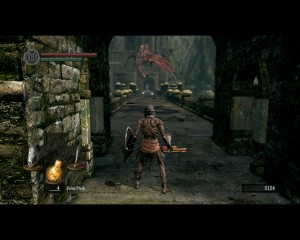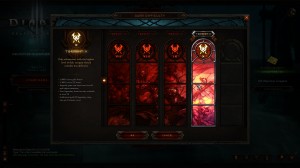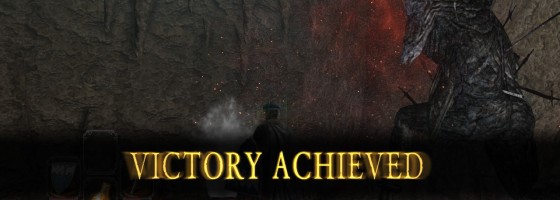Trying to balance intentionally difficult games is one of the more challenging tasks of a game developer. As we’ve talked about, there is a fine line between something being challenging and just plain frustrating to deal with; especially in games built around rogue-like design.
This is all the more so when you are designing a game with an inverse difficulty curve, or when the game is harder at the start for several reasons. Many games have had trouble balancing game design this way, such as today’s example of the Darkest Dungeon.
Rising to the Task:
In a traditional video game, the difficulty curve of the title starts out low and continues to build and build by adding in new challenges, enemies and situations. However, in games built around rogue-like design or randomly generated content, there isn’t a set difficulty curve. This leads to many harder titles designed around an inverse difficulty curve, meaning that the game starts out hard and will eventually mellow out.
We see this in titles like Dark Souls, the Darkest Dungeon and even action games like Ninja Gaiden Black. Each game starts out very hard for different reasons, and as the game goes on the difficulty becomes easier due to the introduction of new skills and the player learning the game.
Much has been talked about the Souls series in terms of its challenge; each game always puts the player at a weaken state and limits their in-game progression at the start. This is to challenge the player to learn the basics and make sure that they have a baseline understanding of how the game works before giving them the means to improve, because if they can’t beat the first stage with their own skills, they’ll have no way of beating the rest of the game no matter how much they level up.
Many action titles start the player off with a very limited health pool and forces them into fights where it will only take a few hits to kill them; through time, the player will unlock health upgrades while improving their skills to tip the balance.
We’ll talk more about Darkest Dungeon in a minute, but the key point is that these games start out hard and get easier despite introducing new challenges as the player becomes more accustomed to the design. Another key example are rogue-likes with randomly generated content. The challenge at the start is simply learning the rules of the world and how to apply them to give you an edge. Once the player knows what events do and the best items, they’re able to better control their way through the game despite it being randomly generated.

Games with inverse difficulty curves challenge the player from the start to survive with weaken abilities and a lack of knowledge of the game
Unfortunately, one of the big problems with inverse difficulty curves is when it comes to balancing the game, which takes us to the problem Darkest Dungeon has been having.
Pitch Black:
Darkest Dungeon was billed as a hardcore rogue-like where every step could be met by disaster. The game has had a number of balance patches, character updates and under the hood changes to how the game works.
At the start of early access, many people found the Darkest Dungeon to be hard at the start, but became gradually easier to the point of boredom. The reason is that the challenge of the game was built around the player having limited characters and gear; once they hit max level and had great trinkets, the game became very easy.
You can watch footage from any Youtuber who made it to level 6 in the early days and how the game became boring. To combat this, the developers introduce game-wide changes to the system and design in many ways. First, the inclusion of corpses that would block enemy formations and make it harder for specialize characters to attack. Heart attacks that would kill a character if they hit 200 stress, giving enemy attacks enhanced debuffs, penalizing a player for taking too long during combat and the list goes on.
What has happened is that the Darkest Dungeon has indeed become a lot harder, but it has driven a lot of low level and beginners away. Remember, inverse difficulty curves mean that the game as a whole becomes easier over play, not harder; this was the point of the Darkest Dungeon at the start.
The problem with all the changes Redhook has added is that they affect the early game too. Things were already hard enough to start out with; now with increased stress damage, debuffs, diseases etc, it’s gotten to the point of punishing the player to start playing the game. Here’s the big problem, for everyone who has hit maxed level with great trinkets and fully upgraded characters, it’s still easier for them to play despite the changes to the system.
There has been nothing to really compensate the player for these difficulty changes; again, because they don’t want the late game to be too easy and any changes would flow to it. This presents the problem and big decision of inverse difficulty curves for the designer: How hard do you want your game to be?
Figuring out the Foundation:
Because inverse difficulty curve games introduce the bulk of their challenge from the get-go, you need to look at your game and decide just how hard you want to make the game. The more system wide changes you add, the more it’s going to impact the early game.
This is why it’s so important to have a baseline or core foundation set up of how you want your game to be: Something that is set in stone and where the rest of the game extrapolates and grows from. Redhook’s changes have been messing with the foundation of their game, causing all those difficulty increases and penalties to spread like a bad apple spoiling the bunch. Since character upgrades and skills are hard-coded into the game, it’s easy for a baseline to be developed in a game like the Darkest Dungeon, versus a rogue-like with procedurally or randomly generated gear.

Blizzard has smartly altered Diablo 3’s progression with patches; leaving the foundation alone and providing harder challenges for the players who want them
What Redhook should be doing is figuring out just how they want the start of the game to go in terms of balance and challenge, and then lock that down and not touch it ever again.
This has been the beauty of Diablo 3’s upgrades and how the developers have added in more challenge without upsetting the status quo or foundation. The developers have not touched the early game at all for several patches; instead, they’ve add in new enemies and situations for the late game.
Dark Souls being another example; by starting the player off very weak, the developers knew exactly the types of characters the early stages should be designed around. As the game goes on, more variables are introduced to make up for the fact that the player can now define their characters better and upgrade their abilities.
Red Letter Day:
At this moment in time, Redhook has about a month left before their planned release of the Darkest Dungeon. It’s still very much up in the air as to what the final product will look like, but it’s safe to say that the game has had one hell of a time in early access. As I’ve said before, it’s going to be fascinating watching what they do with the game, as it’s going to make or break the game on release; once the game is out, the torch is going to go out on them making any more grand changes to the design.
For more on the Darkest Dungeon, you can watch my survival guide video series with updated videos from the latest patch.


